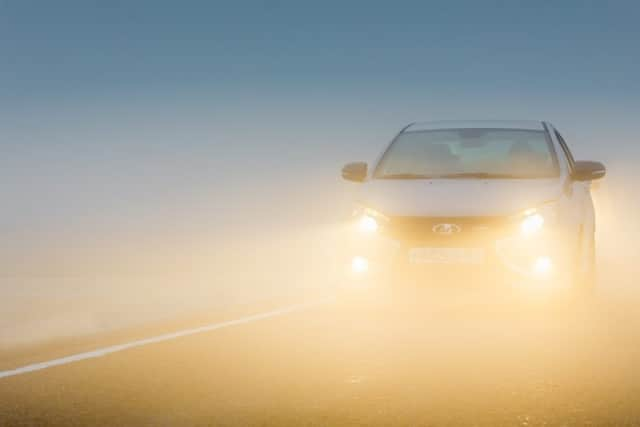How to drive safely when wind, rain and snow hit


Driving safely in snow, rain and floods
Snow and rain is starting to hit all parts of the country causing disruption for many, as the UK is well and truly in the grip of winter.
New guidance from Moneybarn dives into winter driving laws, from driving with snow on the car to driving in wellies, as well as tips to drive safely.


Driving with snow on your car
Advertisement
Hide AdAdvertisement
Hide AdThere are no laws specifically prohibiting driving with snow on your cars, but rule 229 of the Highway Code states that you must be able to see clearly, so you should make sure that there is no snow on your windscreen.
Driving with a frozen or misty windscreen


The same laws and rules from above apply here, meaning that you need to be able to clearly see where you’re going when driving.
In addition, the Road Vehicles (Construction and Use) Regulation 30 states that: “All glass or other transparent material fitted to a motor vehicle shall be maintained in such condition that it does not obscure the vision of the driver while the vehicle is being driven on a road.”
Leaving the engine running to deice windows
Aside from wasting fuel, you could also be in breach of the law and face a £20 fixed-penalty fine (rising to £40 if not paid on time and even up to £80 in certain areas of London where there are extra measures to cut emissions).
Driving in wellies
Advertisement
Hide AdAdvertisement
Hide AdAgain, this isn’t strictly illegal, but it is something to take note of. Rule 97 of the Highway Code says that you must make sure that your “clothing and footwear do not prevent you using the controls in the correct manner”.


Winter emergency kits


Once again, just because it isn’t enshrined in law doesn’t mean that keeping one isn’t a smart idea.Keeping lights and number plates clean
Keep your car clean
It’s not an offence to have a dirty car, but there are two parts of the vehicle that you must keep clean – both your lights and number plate need to be unobscured and readable.
Using fog lights


It’s actually illegal to have your fog lights on when it isn’t foggy, with the Road Vehicles Lighting Regulations 25 and 27 saying that they must not be used: “at any time other than in conditions of seriously reduced visibility”, or face a £30 fine.
Tips for driving in snowy and icy conditions
Advertisement
Hide AdAdvertisement
Hide AdGo easy on the throttle, making sure not to accelerate too forcefully. If you’re coming up to a hill try to hang back a little from the cars in front of you so that you’re not forced into stopping halfway up.
When to use headlights
Use your headlights if the snow is heavy and obstructing your vision.
If the roads are really icy, don’t worry about taking things very slowly and surely, as rushing and panicking could cause an accident. If you hit black ice, try not to panic and as hard as it is, avoid any sudden, aggressive manoeuvres.
Tips for driving in heavy rain and floods


Keep an eye out of large or fast-moving vehicles as these can create spray from the road and reduce your visibility.
Keep windscreen mist free
Advertisement
Hide AdAdvertisement
Hide AdUse your air conditioning to prevent your windows from steaming up. If you do happen to break down, don’t leave the bonnet open as the rain could cause damage.
Try not to aquaplane
If your steering suddenly feels lighter, then you could be aquaplaning.
If this happens, ease off the accelerator and allow your speed to naturally decline until you’re back in control.
Keep an eye out for floods
Try to avoid flooded areas if possible. Keep in low gear if driving through water and if you’ve just driven through floodwater, stop to allow any water to drain from the vehicle.